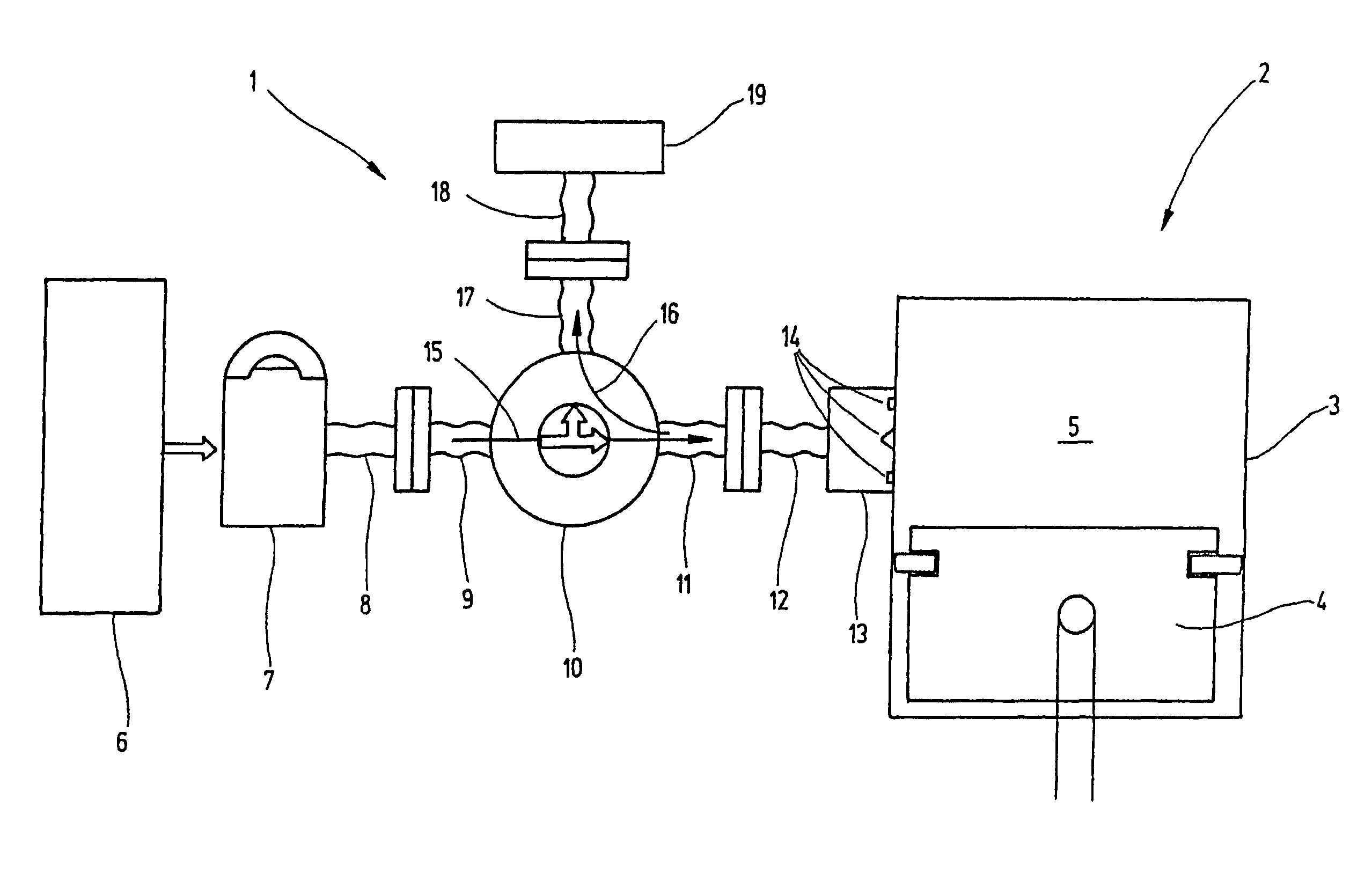Method for igniting combustion of fuel in a combustion chamber of an engine, associated device and engine
a combustion chamber and combustion chamber technology, applied in the direction of non-adjustable resistors, resistors, combustion processes, etc., can solve the problems of only insignificant optimization of the combustion process, increased production costs due to the required catalyst materials, and limited combustion propagation speed, so as to reduce fuel consumption and reduce pollutant emission, the effect of optimizing the combustion characteristi
- Summary
- Abstract
- Description
- Claims
- Application Information
AI Technical Summary
Benefits of technology
Problems solved by technology
Method used
Image
Examples
Embodiment Construction
[0028]FIG. 1 schematically shows the structure of an ignition device 1 according to an exemplary embodiment of the present invention for a schematically shown engine 2. Only the cylinder 3 and the piston 4 which moves up and down in it are shown. The piston 4 and the cylinder 3 border the combustion space 5 in which ideally a fuel-air mixture is uniformly distributed. In FIG. 1 the piston 4 is roughly at top dead center.
[0029]The ignition device 1 comprises a pulsed high voltage power pack 6 with energy which drives the microwave source 7. A first piece of preferably flexible microwave line 8 is connected by a flange to a first connecting flange 9 of the circulator or coupler 10. On the side opposite the first connecting flange 9, the circulator 10 has a second connecting flange 11 connected by a flange to a second, preferably flexible microwave line 12 leading to the microwave window 13.
[0030]The microwave window 13 is fixed on the jacket surface of the cylinder 3 such that the mic...
PUM
 Login to View More
Login to View More Abstract
Description
Claims
Application Information
 Login to View More
Login to View More - R&D
- Intellectual Property
- Life Sciences
- Materials
- Tech Scout
- Unparalleled Data Quality
- Higher Quality Content
- 60% Fewer Hallucinations
Browse by: Latest US Patents, China's latest patents, Technical Efficacy Thesaurus, Application Domain, Technology Topic, Popular Technical Reports.
© 2025 PatSnap. All rights reserved.Legal|Privacy policy|Modern Slavery Act Transparency Statement|Sitemap|About US| Contact US: help@patsnap.com



